|
Books Should Be Free Loyal Books Free Public Domain Audiobooks & eBook Downloads |
|
|
Books Should Be Free Loyal Books Free Public Domain Audiobooks & eBook Downloads |
|
Science Fiction |
|---|
|
Book type:
Sort by:
View by:
|
By: Clifford Simak (1904-1988) | |
|---|---|
 Hellhounds of the Cosmos
Hellhounds of the Cosmos
From Astounding Stories of 1932. Earth is being attacked by horrible black monsters that appear from nowhere and destroy and kill everything and everyone in their paths. Nothing affects them, nothing stops them; they are impervious to all weapons. Earth is doomed. But there is one hope and it rests on the shoulders of 98 brave men. Can they do it? can they find a way of retaliating? Listen and find out. | |
 Project Mastodon
Project Mastodon
Clifford Simak deals with the implications of time travel in his own unique way in this story. What if a group of guys did it on their own, without any help from government or industry? On a shoestring,so to speak? Would anyone believe them? What would you do if you could go back 150,000 years to a time when mastodons and saber toothed tigers roamed North America? And what happens when they run out of money? All these questions are explored in the usual humorous, wry Simak way in this story. | |
By: Cyrano de Bergerac (1619-1655) | |
|---|---|
 Voyage to the Moon
Voyage to the Moon
This is an edition by Professor Curtis Page of the Lovell translation of a seminal work of science fiction by Cyrano de Bergerac. Arguably a whimsical forerunner to the adventure stories of Jules Verne, and the French sci-fi tradition generally, it is a utopian novel of space travel complete with rocket powered flight and extra-terrestrial beings. | |
By: Dallas McCord Reynolds (1917-1983) | |
|---|---|
 Status Quo
Status Quo
Larry Woolford is a government agent, tasked with investigating subversive activity. He does everything an ambitious young man should do if he wants to succeed: wear the right clothes, listen to the right music, even drink vodka martinis. Then he stumbles across a conspiracy of Weirds plotting to overthow the entire existing social order. It's a race against time. Can he stop their fiendish plan, and keep America safe for shallow judgements based on status symbols? Status Quo was nominated for the 1962 Hugo Award for short fiction. | |
 5 Science Fiction Stories by Mac Reynolds
5 Science Fiction Stories by Mac Reynolds
Five early stories by one of my favorite SF writers, Mack Reynolds. Medal of Honor is an intriguing look into the mind of someone who is above the law; who cannot commit a crime. How will he act? especially if he is a self centered drunk? Potential Enemy is story about the sad state of human minds that are ruled by fear and paranoia. Happy Ending is an SF story about the far future when the last solar system wide dictator has been finally defeated and what will he do? What will he do? This is also an exploration of mental megalomania and it's effects... | |
By: David Lindsay (1876-1945) | |
|---|---|
 A Voyage to Arcturus
A Voyage to Arcturus
A Voyage to Arcturus is a novel by Scottish writer David Lindsay, first published in 1920. It combines fantasy, philosophy, and science fiction in an exploration of the nature of good and evil and their relationship with existence. It has been described by critic and philosopher Colin Wilson as the "greatest novel of the twentieth century" and was a central influence on C. S. Lewis's Space Trilogy. | |
By: Donald Wandrei (1908-1987) | |
|---|---|
 Raiders of the Universes
Raiders of the Universes
It was the 34th century and all five of the Federation of Planets around Sol were buzzing with their usual activity when the Raiders appeared. They were indeed Raiders of Universes because they had ravaged many systems before reaching Earth and showed no signs of slowing down in the least. Their weapons were invincible, their greed merciless and their natures completely alien. Indeed 'they' were from another dimension entirely. Eating up entire solar systems and planets, they slowed down just a bit when intelligent life was found on Earth... | |
By: Donald Wollheim (1914-1990) | |
|---|---|
 The Secret Of The Ninth Planet
The Secret Of The Ninth Planet
An alien race has put a station on Earth and other planets in order to steal the rays of the sun, possible causing the sun to nova within two years. Burl Denning, a high school student, is the only person who has the power to stop the alien project. Can he and the crew of the experimental space ship Magellan act in time to save the earth? | |
By: Douglas Morey Ford (1851-1916) | |
|---|---|
 Raid of Dover: A Romance of the Reign of Woman A.D. 1940
Raid of Dover: A Romance of the Reign of Woman A.D. 1940
Britain is ruled by women who experience invasion and natural disasters. Men eventually figure out a plan to regain power to replace the government. - Summary by Kirk Z | |
By: Dwight V. Swain (1915-1992) | |
|---|---|
 Cry Chaos!
Cry Chaos!
Gripping and short, Cry, Chaos! is the speculative fiction story of one leader's valiant fight to protect the galaxy - and himself - from slavers and thieves. - Summary by April Mendis | |
By: E. E. Smith (1895-1965) | |
|---|---|
 Spacehounds of IPC
Spacehounds of IPC
When the Inter-Planetary Corporation's (IPC) crack liner “IPV Arcturus” took off on a routine flight to Mars, it turned out to be the beginning of a unexpected and long voyage. There had been too many reports of errors in ship's flight positions from the Check Stations and brilliant physicist Dr. Percival (“Steve”) Stevens is aboard the Arcturus on a fact-finding mission to find out what's really happening, and hopefully save the honor of the brave pilots of the space-liner Arcturus from the desk-jockeys' in the Check Stations implications of imprecision - the nastiest insult you could cast at a ships pilot... | |
 Skylark Three
Skylark Three
This is a sequel to The Skylark of Space. The novel concerns Richard Seaton and his allies who have encounters with aliens while fighting DuQuesne and the Fenachrone.. | |
 Subspace Survivors
Subspace Survivors
A team of space travelers are caught in a subspace accident which, up to now, no one has ever survived. But some of the survivors of the Procyon are not ordinary travelers. Their psi abilities allow them to see things before they happen. But will it be enough?Smith's story "Subspace Survivors" first appeared in the July 1960 issue of the magazine Astounding. | |
 Galaxy Primes
Galaxy Primes
They were four of the greatest minds in the Universe: Two men, two women, lost in an experimental spaceship billions of parsecs from home. And as they mentally charted the Cosmos to find their way back to earth, their own loves and hates were as startling as the worlds they encountered. | |
 First Lensman
First Lensman
The Secret Planet. No human had ever landed on the hidden planet of Arisia. A mysterious space barrier turned back both men and ships. Then the word came to Earth, "Go to Arisia!", Virgil Samms of the Galactic Patrol went--and came back with the Lens, the strange device that gave its wearer powers no man had ever possessed before. Samms knew the price of that power would be high. But even he had no idea of the ultimate cost, and the weird destiny waiting for the First Lensman. First Lensman is the sequel to Triplanetary, and the second book of E.E. "Doc" Smith's classic Lensman series. (from the original book cover and Mark Nelson) | |
 Tedric
Tedric
This is a wonderful combination of far future science fiction with Conan like sword and sorcery; lots of blood, gore, honor and evil. The immensely powerful hero, Tedric, is a man's man who refuses to accept the cruel human sacrifices demanded by the 'god' Sarpedion and is set on destroying him. To do this he needs some secrets of metallurgy that future social scientists are willing to give him. He manages to overcome all obstacles until of course he meets the dazzlingly lovely Lady Rhoaan who stops him cold... | |
 Masters of the Vortex
Masters of the Vortex
"Masters of the Vortex" is a 1960 novel by E.E. "Doc" Smith which incorporates and expands upon three short stories, "The Vortex Blaster", "Storm Cloud on Deka", and "The Vortex Blaster Makes War". Somewhat confusingly, it was originally published under the title "The Vortex Blaster", the same name as the first short story, before being republished as "Masters of the Vortex". It is the final novel, or a spinoff, of The Lensmen stories. It follows the adventures of Neal "Storm" Cloud, a brilliant mathematician who makes it his personal mission to snuff out wiild nuclear vortexes all over the galaxy, at great risk to his own safety... | |
 Skylark of Valeron
Skylark of Valeron
The Skylark of Valeron is the third volume in the classic Skylark trilogy by E.E. ‘Doc’ Smith. DuQuesne has survived to become Master of the Earth, ruling with an iron hand because the heroes, the Seatons and the Cranes must run for their lives into the fourth dimension from pure intellectual beings who can dematerialize them on a whim — from which dimension none have ever returned. If you have ever wondered what it like to exist in an extra dimensioned world 'Doc' Smith tells us here in graphic and exciting detail. This 'book' was published in seven installments in Astounding Stories from 1934 to 1935. - Summary by phil chenevert | |
 Vortex Blaster Makes War
Vortex Blaster Makes War
It's the Vortex Blaster, Doc Smith's science fiction hero that has already saved the world from atomic vortices with his prodigious computing mind, is thrust again into taking on more hero like behavior. What more needs be said? This pulp SF thriller was first published in 1942 in Astounding Stories. | |
 Storm Cloud on Deka
Storm Cloud on Deka
Another pulp Science Fiction saga by E.E.'Doc' Smith. The Galactic Civilization is established, lensmen are on every world. But those horrible Atomic Vorteces still rage on many worlds. The only man who can extinguish them, the human computer 'Storm' Cloud, is embroiled in a tangled affair in this story of nasty villians and partially clad women. Don't ask me, I just read this stuff. - Summary by phil chenevert | |
By: E. E. “Doc” Smith (1890-1965) | |
|---|---|
 Triplanetary, First in the Lensman Series
Triplanetary, First in the Lensman Series
Triplanetary was first serialized in Amazing Stories in 1934. After the Lensman series became popular, Smith took his Triplanetary story and turned it into the first of the Lensman series, using it as a prequel to give the back story for the protaganists in the Lensmen series. He added 6 new chapters, doubling it in size and it's really a different book from the serialized novel, being published 14 years after the first. It was put into Gutenberg just last year. The novel covers several episodes in an eons-long eugenics project of the super-intelligences of the Arisia... | |
By: E.E. Smith (1890-1965) | |
|---|---|
 The Vortex Blaster
The Vortex Blaster
Uncontrolled, terribly violent Atomic Vortices are slowly destroying civilization on every human planet throughout the galaxy. Nothing can contain or stop them despite the lensmen's best efforts until one destroys the home and family of "Storm" Cloud, brilliant atomic physicist. The tragedy triggers actions on his part that pit him one-on-one against the horrible vortices. Introducing "storm" Cloud as THE Vortex Blaster | |
By: E.E. “Doc” Smith (1890-1965) | |
|---|---|
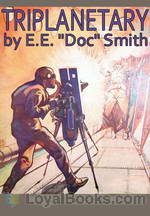 Triplanetary
Triplanetary
“Doc” E.E. Smith pretty much invented the space opera genre, and Triplanetary is a good and well-known example. Physics, time, and politics never stand in the way of a plot that gallops ahead without letup. Having earned a PhD in chemical engineering, it’s understandable that the heroes of Smith’s story are all scientists. He didn’t want to be constrained by the limits of known science, however, so in his hands the electromagnetic spectrum becomes a raw material to be molded into ever-more amazing and lethal forms, and the speed of light is no bar to traveling through the interstellar void... | |
By: Edgar Fawcett (1847-1904) | |
|---|---|
 Douglas Duane
Douglas Duane
An introverted, kind-hearted book collector befriends a mad scientist, who isn’t exactly a good friend. When the scientist falls in love with the book collector’s fiancée, he concocts an evil plot to have her for his own. Edgar Fawcett was a prolific author of standard fiction. With Douglas Duane he stepped out of his genre and created an unusual weird fiction work. | |
By: Edgar Rice Burroughs (1875-1950) | |
|---|---|
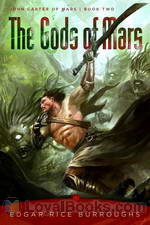 The Gods of Mars
The Gods of Mars
Burroughs’ second book in the classic Barsoom series, The Gods of Mars is a scientific fiction novel following the adventures of John Carter as he returns to Mars after a ten year hiatus in the hope of being reunited with his wife, child and the Red Martian people. First published as a five-part serial in a pulp magazine in the course of 1913, the novel was later published as a whole in 1918. A tale of audacity, honor, optimism, and perseverance, Burroughs successfully builds on to the previous book allowing a broader view of the Red Planet... | |
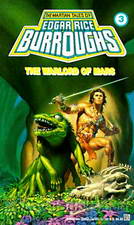 Warlord of Mars
Warlord of Mars
Warlord of Mars by Edgar Rice Burroughs was first published in 1913. It was the third book in an eleven part series known as the Barsoom Chronicles which relate to a sequence of exciting adventure tales set on the fictional planet of Barsoom. In the Barsoom series, Mars, assumed to be older than Earth, is a dying planet. “Barsoom” is the native word for Mars in the Martian language. The stories first appeared in serialized form in various magazines like All-Story, Argosy, Amazing Stories and The Blue Book... | |
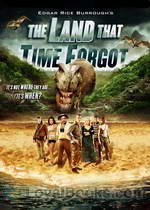 The Land that Time Forgot
The Land that Time Forgot
Off the coast of Greenland, a man finds a floating thermos bottle. Wedged tightly inside is a sheaf of papers covered with minute handwriting. As he begins to read, a fantastic tale begins to unwind. The writer, on his way to a WWI battlefield was shipwrecked and his entire regiment except for a woman and his faithful dog are killed. The three are rescued by a passing British tug, but fall prey to the schemes of a German spy aboard. They are then captured by the crew of a German U-boat. After many near mishaps, they sail towards Greenland... | |
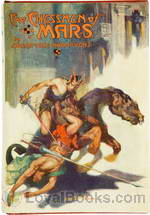 The Chessmen of Mars
The Chessmen of Mars
If you're a sci-fi fan, then you've probably heard of Edgar Rice Burroughs' famous Barsoom series of science fiction fantasy novels. Set in the “dying planet” Mars, the ten books in the series portray an Earthman, John Carter and his astral journey to the Red Planet, his marriage with a native princess and his descendants. The Chessmen of Mars is the fifth book in the Barsoom set, written in 1921 and published in serial form in Argosy magazine over the period of a year. Here, John Carter's daughter Tara meets Prince Gahan of the Gathol kingdom, but takes an instant dislike to the young and fashionable man, feeling that he is just a shallow youth... | |
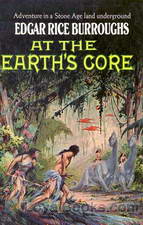 At the Earth's Core
At the Earth's Core
This is the first book in the Pellucidar series. Pellucidar is a fictional Hollow Earth milieu invented by Edgar Rice Burroughs for a series of action adventure stories. The stories initially involve the adventures of mining heir David Innes and his inventor friend Abner Perry after they use an “iron mole” to burrow 500 miles into the earth’s crust. (adapted from Wikipedia) | |
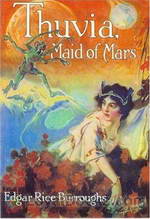 Thuvia, Maid of Mars
Thuvia, Maid of Mars
Published in 1920, Thuvia, Maid of Mars is the fourth book in the Barsoom series and concentrates on Carthoris, the son of infamous John Carter, and Thuvia, the princess of Ptarth, as they find themselves entangled in a complex web of love and strict traditions of Barsoom. A typical Burroughs piece, the installment contains all the required elements of an effective pulp fiction, including a hero, a damsel in distress, unforeseen complications, and a generous supply of action. Welcoming a new... | |
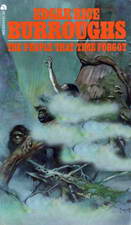 The People that Time Forgot
The People that Time Forgot
The People that Time Forgot is a science fiction novel, the second of Edgar Rice Burroughs’ “Caspak” trilogy. The first novel ended with the hero writing a manuscript of his adventures and casting it out to sea in his thermos bottle. The second novel begins with the finding of the manuscript and the organization of a rescue expedition. | |
 Pellucidar
Pellucidar
Pellucidar is a fictional “Hollow Earth” milieu invented by Edgar Rice Burroughs for a series of action adventure stories. The stories initially involve the adventures of mining heir David Innes and his inventor friend Abner Perry after they use an “iron mole” to burrow 500 miles into the earth’s crust. This is the second book in the series. | |
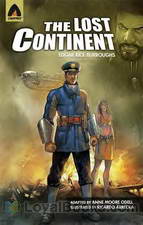 The Lost Continent
The Lost Continent
Originally published under the title Beyond Thirty. The novel, set in the year 2137, was heavily influenced by the events of World War I. In the future world depicted in the novel, Europe has descended into barbarism while an isolationist Western Hemisphere remains sheltered from the destruction. The title Beyond Thirty refers to the degree of longitude that inhabitants of the Western Hemisphere are forbidden to pass. | |
By: Edgar Rice Burroughs (1875-1950) | |
|---|---|
 Tarzan and the Ant Men
Tarzan and the Ant Men
Lord Greystoke, Tarzan of the Apes, is embroiled in thrilling adventures among the tiny, warlike Minunians. | |
 Moon Maid
Moon Maid
Sabotage accidentally takes Earth's first manned interplanetary expedition to the Moon, where a sublunar adventure ensues, involving two intelligent species and a good deal of fighting as well as romance. The perceptive reader will perceive the author's peculiar notions concerning the behavior of volcanos, an offense against scientific fact that is hard to pardon in a writer of science fiction, but if it can be overlooked, the variety of incident and the fast pace of the action, full of surprises, amply repay the reader's generous indulgence. Trilogy: The Moon Maid The Moon Men The Red Hawk | |
 The Moon Men
The Moon Men
The second book in the Moon Maid trilogy, this novel details the exploits of a descendant of the protagonist of the first novel as he leads a rebellion against moon dwellers who have enslaved the people of Earth. - Summary by Ben Tucker Trilogy: The Moon Maid The Moon Men The Red Hawk | |
By: Edmond Hamilton | |
|---|---|
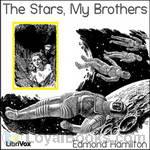 The Stars, My Brothers
The Stars, My Brothers
Edmond Hamilton (1904 – 1977) had a career that began as a regular and frequent contributor to Weird Tales magazine. The first hardcover publication of Science Fiction stories was a Hamilton compilation, and he and E.E. “Doc” Smith are credited with the creation of the Space Opera type of story. He worked for DC Comics authoring many stories for their Superman and Batman characters. Hamilton was also married to fellow author Leigh Brackett. – Published in the May, 1962 issue of Amazing Stories “The Stars, My Brothers” gives us a re-animated astronaut plucked from a century in the past and presented with an alien world where the line between humans and animals is blurred. | |
 The City at World's End
The City at World's End
A surprise nuclear war may cause the End of the World, but not the way anyone could have imagined. A classic science fiction tale from Galaxy Magazine. | |
 Citadel of the Star Lords
Citadel of the Star Lords
Out of the dark vastness of the void came a conquering horde, incredible and invincible, with Earth's only weapon—a man from the past! From Imagination Stories of Science and Fantasy magazine, October 1956. - Summary by Original Gutenberg text | |
 Metal Giants
Metal Giants
Huge metal monsters spread terror throughout the land... the tale of a Frankenstein that turned on its creator! - Summary by Weird Tales Magazine, December 1926 | |
By: Edward Bellamy (1850-1898) | |
|---|---|
 Looking Backward: 2000-1887
Looking Backward: 2000-1887
Looking Backward: 2000-1887 is a utopian novel by Edward Bellamy, first published in 1888. It was the third largest bestseller of its time, after Uncle Tom’s Cabin and Ben-Hur: A Tale of the Christ.The book tells the story of Julian West, a young American who, towards the end of the 19th century, falls into a deep, hypnosis-induced sleep and wakes up more than a century later. He finds himself in the same location (Boston, Massachusetts) but in a totally changed world: It is the year 2000 and, while he was sleeping, the U... | |
By: Edward Douglas Fawcett (1866-1960) | |
|---|---|
 Hartmann the Anarchist, or the Doom of a Great City
Hartmann the Anarchist, or the Doom of a Great City
A gem of nineteenth-century science fiction from mountaineer, philosopher and occasional novelist, Edward Douglas Fawcett. Stanley, a wealthy young socialist, is firmly opposed to revolution. But he finds himself on board the Attila, a coal-fired aeronef invented by the notorious anarchist Rudolph Hartmann, embroiled in a plot to bombard London from the air. Hartmann the Anarchist was republished, in part, in 1971 in the final issue of Forgotten Fantasy magazine, a forerunner to the celebrated Newcastle Forgotten Fantasy book series. | |
By: Edward Earl Repp (1901-1979) | |
|---|---|
 Buccaneer of the Star Seas
Buccaneer of the Star Seas
A nifty pulp SF story written in 1940 and published in Planet Stories. What would happen if someone found the secret of immortality in 1423 and lived until the 20th century? Of course the catch is that someone must die for him to keep on living; it must be a woman, a woman who loves him and he must do the killing. Carlyle may be such a man. In this story, he roams the uncharted star-seas, seeking Death as he sought the richly-laden derelicts in that sargossa of long-vanished space-galleons. Did I say seeking death? Yes I did. . - Summary by phil chenevert | |
By: Edward Elmer Smith (1890-1965) | |
|---|---|
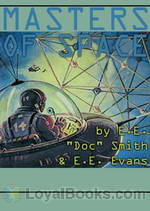 Masters of Space
Masters of Space
The Masters had ruled all space with an unconquerable iron fist. But the Masters were gone. And this new, young race who came now to take their place–could they hope to defeat the ancient Enemy of All? | |
By: Edward George Bulwer-Lytton (1803-1873) | |
|---|---|
 The Coming Race
The Coming Race
Edward George Earle Lytton Bulwer-Lytton, 1st Baron Lytton (1803-1873) was an English novelist, poet, playright, and politician. Lord Lytton was a florid, popular writer of his day, who coined such phrases as “the great unwashed”, “pursuit of the almighty dollar”, “the pen is mightier than the sword”, and the infamous incipit “It was a dark and stormy night.” Despite his popularity in his heyday, today his name is known as a byword for bad writing. San Jose State University holds... | |
By: Edward M. Forster (1879-1970) | |
|---|---|
 The Machine Stops
The Machine Stops
"The Machine Stops" is a science fiction short story by E. M. Forster. After initial publication in The Oxford and Cambridge Review (November 1909), the story was republished in Forster's The Eternal Moment and Other Stories in 1928. After being voted one of the best novellas up to 1965, it was included that same year in the populist anthology Modern Short Stories. The story describes a world in which most of the human population has lost the ability to live on the surface of the Earth. Each individual now lives in isolation below ground in a standard 'cell', with all bodily and spiritual needs met by the omnipotent, global Machine. | |
 Machine Stops (version 4)
Machine Stops (version 4)
"The Machine Stops" is a science fiction story by E. M. Forster. After initial publication in 1909 the story was republished in Forster's The Eternal Moment and Other Stories in 1928. After being voted one of the best novellas up to 1965, it was included that same year in the populist anthology Modern Short Stories. In 1973 it was also included in The Science Fiction Hall of Fame, Volume Two. The story is particularly notable for predicting new technologies such as instant messaging and the Internet... | |
By: Edward S. Ellis (1840-1916) | |
|---|---|
 Steam Man of the Prairies
Steam Man of the Prairies
Ethan Hopkins and Mickey McSquizzle-a "Yankee" and an "Irishman"-encounter a colossal, steam-powered man in the American prairies. This steam-man was constructed by Johnny Brainerd, a teenaged boy, who uses the steam-man to carry him in a carriage on various adventures. | |
By: Edward W. Ludwig (1920-1990) | |
|---|---|
 Coffin for Jacob
Coffin for Jacob
Recently graduated and now a junior astrogator, Ben Carson punches an irritating drunkard in Luna City, killing him with one punch. Fleeing the scene, he heads to Venus. There was just one flaw in his decision. He hadn't realized that the memory of the dead man's face would haunt him, torment him, follow him as constantly as breath flowed into his lungs. But might not the rumble of atomic engines drown the murmuring dead voice? Might not the vision of alien worlds and infinite spaceways obscure the dead face? Arriving on Venus, he joins an underground movement in exchange for their help. Unfortunately, his tortured conscience prevents his wholehearted commitment to their cause. | |
By: Edwin Abbott Abbott (1838-1926) | |
|---|---|
 Flatland: A Romance of Many Dimensions
Flatland: A Romance of Many Dimensions
If you've never heard the term “Mathematical Fiction” before, Edwin Abbott Abbott's 1884 novella, Flatland can certainly enlighten you! Flatland: A Romance of Many Dimensions was published in 1884 and since then, it has been discovered and re-discovered by succeeding generations who have been delighted by its unique view of society and people. The plot opens with a description of the fictional Flatland. The narrator calls himself “Square” and asks readers to “Imagine a vast sheet of paper on which straight Lines, Squares, Triangles, Pentagons, Hexagons and other figures, instead of remaining fixed in their places, move freely about... | |
By: Edwin L. Arnold | |
|---|---|
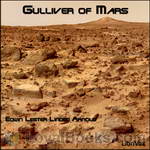 Gulliver of Mars
Gulliver of Mars
This escapist novel, first published in 1905 as Lieutenant Gullivar Jones: His Vacation, follows the exploits of American Navy Lieutenant Gulliver Jones, a bold, if slightly hapless, hero who is magically transported to Mars; where he almost outwits his enemies, almost gets the girl, and almost saves the day. Somewhat of a literary and chronological bridge between H.G. Wells and Edgar Rice Burroughs, Jones’ adventures provide an evocative mix of satire and sword-and-planet adventure. | |
By: Eric L. Busby | |
|---|---|
 Star Trek: The Section 31 Files
Star Trek: The Section 31 Files
This collection from Darker Projects brings the Star Trek series back to life with a fictional account of our universe on the brink of war. With stakes running high a splinter group decides to take on the most morally dubious missions and bring us the listeners along for the ride. Sometimes in war there are no good options and this series explores those darker decisions that don't have to be made in everyday life. The story is action packed and goes at light speed jumping around the universe always keeping in the center of the action and outwitting the enemy. | |
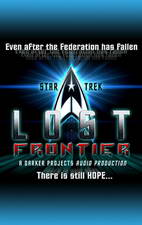 Star Trek: Lost Frontier
Star Trek: Lost Frontier
This story begins after a long and devastating war that has left The Federation in shambles. The pressing mission for the remaining ships in Star Fleet is to travel the war-torn galaxy's and find old alleys to reunite under one federation. Many of the classic Star Trek races make an appearance in this series including the Klingons, Romulans and everyone's favorite the Borg! This book is fast paced and a very creative read. It comes recommended highly for anyone who has followed Star Trek and it also fills in a good amount of background information for those less well versed in the subject. | |
By: Evelyn E. Smith (1927-2000) | |
|---|---|
 Sentry of the Sky
Sentry of the Sky
There had to be a way for Sub-Archivist Clarey to get up in the world—but this way was right out of the tri-di dramas. - Summary by original text | |
By: Everett C. Smith | |
|---|---|
 Metal Moon
Metal Moon
With interplanetary exploration. expeditions will range through and beyond the solar system. Colonization will not be far behind. But what will the colonies be like at the end of several hundred centuries and would they even recognize each other as members of the same human stock? The book focuses on four different races, and what will be the outcome of contact between them. - Summary by Paul Harvey | |
By: Fletcher Pratt (1897-1956) | |
|---|---|
 Blue Star
Blue Star
The novel is set in a parallel world in which the existence of psychic powers has permitted the development of witchcraft into a science; in contrast, the physical sciences have languished, resulting in a modern culture reminiscent of our eighteenth century. The protagonists are Lalette Asterhax, a hereditary witch, and Rodvard Bergelin, an ordinary government clerk who has been recruited into the radical conspiracy of the Sons of the New Day. Rodvard, though attracted to the daughter of a baron, is commanded by his superiors to seduce Lalette instead to gain the use of her blue star in the furtherance of their revolutionary aims... | |
By: Florence Carpenter Dieudonné (1850-1927) | |
|---|---|
 Rondah, or Thirty-Three Years in a Star
Rondah, or Thirty-Three Years in a Star
A bizarre and exuberant work of pure imagination, Rondah, or, Thirty-Three Years in a Star tells the story of a ragtag group of space explorers who—aided by a shuttle set off by clockwork explosives in the Adirondack mountains—find themselves stranded on alien planet. Their adventures will test the limits of their frayed and tenuous bonds as they seek to colonize the planet, take claim of its resources, and rule over the bizarre alien lifeforms who inhabit it. Utterly strange and bursting at... | |
By: Francis Godwin (1562-1633) | |
|---|---|
 The Man in the Moone
The Man in the Moone
A self-serving Spaniard discovers a means of traveling to the moon, describing his sensations in transit in terms remarkably consistent with modern astronauts' experiences. He finds on the moon a utopia, which he describes in detail, but being a fallen creature, he takes the first opportunity of coming home. ( | |
By: Francis Stevens (1883-1948) | |
|---|---|
 Heads of Cerberus
Heads of Cerberus
A pioneering work in the alternate worlds genre, The Heads of Cerberus was serialized in The Thrill Book in 1919 and published as a novel in 1952. A vial of grey dust transports three unwitting time travelers to a totalitarian version of Philadelphia in the year 2118. While certain landmarks stand unchanged, the societal structure is unrecognizable. Superlative adjectives and numbered buttons have replaced names and an oligarchy wield godlike power over the masses. To return home, the trio must win over the Loveliest, outsmart the Cleverest, and survive a deadly competition. - Summary by Christina Fu | |
By: Frank Belknap Long (1901-1994) | |
|---|---|
 Mars is My Destination
Mars is My Destination
MARS ... Earth's first colony in Space. Men killed for the coveted ticket that allowed them to go there. And, once there, the killing went on.... MARS ... Ralph Graham's goal since boyhood—and he was Mars-bound with authority that put the whole planet in his pocket—if he could live long enough to assert it! MARS ... source of incalculable wealth for humanity—and deadly danger for those who tried to get it! MARS ... in Earth's night sky, a symbol of the god of war—in this tense novel of the future, a vivid setting for stirring action! - From the Book Blurb | |